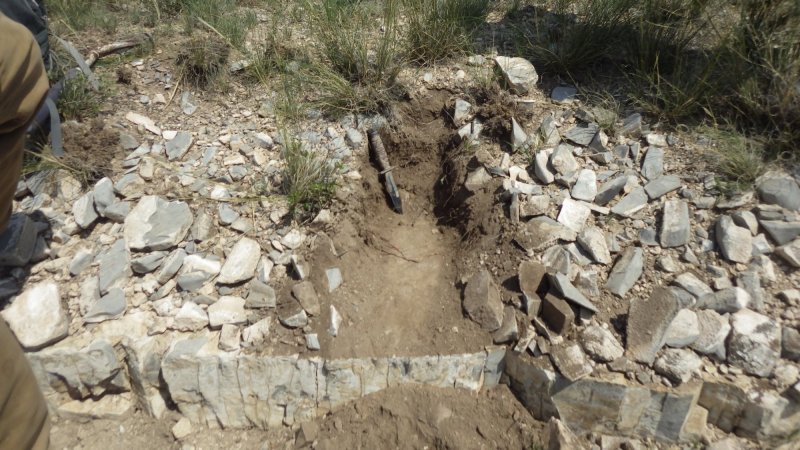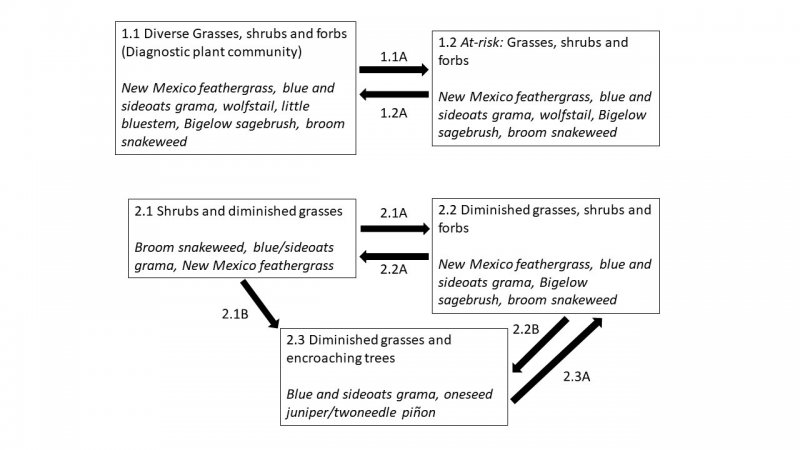Ecological dynamics
Plant tables have not been developed for this site. Until such time as they can be updated, use the plant tables in the referenced literature that correlates to this concept (refer to plant tables from legacy ecological sites below). Since current ecological sites and legacy manuscript information was not correlated to the precise concept of the Lithic Limestone there are notable shortcomings in their applicability to conservation planning here.
The Lithic Limestone site is distinguished from other upland sites in the CP in that cool-season grasses (namely New Mexico feathergrass) are at least codominant in most of its community phases. Similar plant communities can be seen on the upper escarpments of the Limy Escarpments site, and also on many soils in the High Plains (HP) LRU of 70A. In the latter, abundant free carbonates and calcareous petronodes create the same basic soil properties that select for New Mexico feathergrass in the Lithic Limestone site. Another grass species that seems particularly well-suited to this site is sideoats grama.
Since this site is distributed across a relatively large area and covers a considerable range in elevation, and since its soil properties are variable, plant community composition is variable within any given state or community phase. At lower elevations toward the eastern end of the CP, hairy grama is quite common, and one frequently encounters sacahuista and hairy tridens. At higher elevations and toward the northern end of the CP, fringed sage is often found on this site. Similarly, twoneedle pinyon dominates the tree communities at the highest elevations, while oneseed juniper is the dominant tree across most of this site’s extent. Older trees are more common in locations with a significant amount of rock outcrop.
Within this site, the dominant species of short grasses are inherently drought- and grazing-tolerant (Lauenroth, 1994). Across the western parts of the U.S., blue grama is one of the most extensively distributed grasses and occurs in a wide variety of different ecosites ranging from grasslands to shrubland and woodland sites. This grass evolved with grazing by large herbivores and, when grazed continuously, tends to form a short sod. When allowed to grow under lower grazing pressures, the plants develop the upright physiognomy of a bunchgrass. If blue grama is eliminated from an area by extended drought (3 to 4 years) or disturbance such as plowing, regeneration is slow because of very slow tillering rates (Samuel, 1985), low and variable seed production, minimal seed storage in the soil (Coffin, 1989) and limited seedling germination and establishment due to particular temperature and extended soil moisture requirements for successful seedling establishment (Briske, 1978). Buffalograss, which is more abundant at warmer, lower elevations of this site, is often found occupying swale or depression positions across the landscape. Buffalograss is less drought-tolerant than blue grama but re-establishes more quickly following disturbance due to higher seed abundance and viability and more effective above-ground tillering (Peters, 2008).
Large-scale processes such as climate, fire and grazing influence this site. During years with favorable growing seasons, the effects of grazing may be mitigated. During years of low precipitation, grazing can magnify degradation of the site (Milchunas D.G., 1989). Fire is a natural disturbance regime that suppresses succulents and shrubs while stimulating grasses and forbs, however, in contrast to mid and tall grass prairie sites, fire is less important (Wright, 1982). This is because the drier conditions produce less vegetation/fuel load, lowering the relative fire frequency. However, historically, fires that did occur were often very expansive, especially after a series of years where above average precipitation built enough litter/fine fuels. Currently, fire suppression and more extensive grazing in the region have decreased the fire frequency, and it is unlikely that these processes could occur at a natural scale (USNVC, 2017)-G144. According to (Gebow, 2001), fire effects in the same location will vary, especially with fire timing, where seasonality can either hinder or benefit plants depending on their growing stage. Precipitation events occurring before and after fire will also influence the recovery of plants. Fire promotes rhizomatous plant species, such as western wheatgrass, that can take advantage of below-ground rhizomes from which tillering is rapidly initiated.
Correlation to Current Ecological Sites:
The Penrose components of the Lithic Limestone are currently correlated to the Shallow Upland (R070AY003NM) site. Penrose series is an MLRA 69 concept. As noted above, the plant community described in this ESD seems to have been developed using data from hotter, drier areas than the CP, such as MLRAs 70B and 70C.
Shallow Upland legacy tables (R070AY003NM)
Annual production by plant type
Plant Type-------------Low(Lb/Acre) ----------Representative Value(Lb/Acre) ----------High(Lb/Acre)
Grass/Grasslike-------------312--------------------------------700--------------------------------------858
Shrub/Vine-------------------32---------------------------------70----------------------------------------88
Forb----------------------------32---------------------------------70----------------------------------------88
Total---------------------------376--------------------------------840--------------------------------------1034
Community 1.1 plant community composition
Common Name----------Symbol----------Scientific Name----------Annual Production (Lb/Acre)
GRASS/GRASSLIKE
1 sideoats grama----------BOCU-----------Bouteloua curtipendula----------63–150
2 blue grama---------------BOGR2----------Bouteloua gracilis------------------63–150
3 hairy grama--------------BOHI2-----------Bouteloua hirsuta------------------63–150
4 little bluestem-----------SCSC------------Schizachyrium scoparium---------63–150
5 needle and thread------HECO26--------Hesperostipa comata--------------75–113
6 New Mexico feathergrass-HENE5------Hesperostipa neomexicana------75–113
7 threeawn-------------------ARIST----------Aristida--------------------------------8–38
8 common wolfstail---------LYPH----------Lycurus phleoides-------------------8–38
9 squirreltail-------------------ELEL5---------Elymus elymoides-------------------8–38
10 western wheatgrass-----PASM---------Pascopyrum smithii-----------------8–38
11 Graminoid (grass or grass-like)-2GRAM-Graminoid (grass or grass-like)-8–38
FORB
12 buckwheat------------------ERIOG--------Eriogonum----------------------------8–38
13 globemallow----------------SPHAE--------Sphaeralcea--------------------------8–38
14 Forb, annual----------------2FA------------Forb, annual-------------------------15–38
15 Forb, perennial-------------2FP------------Forb, perennial---------------------15–38
SHRUB/VINE
16 prairie sagewort-----------ARFR4---------Artemisia frigida--------------------8–38
17 Bigelow sage---------------ARBI3----------Artemisia bigelovii-----------------15–23
18 winterfat-------------------KRLA2-----------Krascheninnikovia lanata--------15–23
19 skunkbush sumac--------RHTR------------Rhus trilobata-----------------------15–38
20 Shrub, deciduous---------2SD-------------Shrub, deciduous--------------------8–38
Loamy Upland legacy tables (R070AY001NM)
Annual production by plant type
Plant Type-------Low(Lb/Acre) -------RV(Lb/Acre)-------High(Lb/Acre)
Grass/Grasslike -------610--------------860---------------------1100
Forb---------------------130--------------130---------------------140
Shrub/Vine------------130--------------130---------------------130
Total---------------------870--------------1120-------------------1370
Community 1.1 plant community composition
Common Name--------------Symbol-------Scientific Name-------Annual Production (Lb/Acre)
GRASS/GRASSLIKE
1-------blue grama--------------BOGR2-------Bouteloua gracilis---------312–357
2-------western wheatgrass----PASM-------Pascopyrum smithii-------178–223
3-------squirreltail----------------ELEL5-------Elymus elymoides---------89–133
4-------James' galleta-------------PLJA-------Pleuraphis jamesii----------43–89
5-------sideoats grama-----------BOCU-------Bouteloua curtipendula---43–89
6-------threeawn------------------ARIST-------Aristida-----------------------25–44
7-------ring muhly-----------------MUTO2------Muhlenbergia torreyi-----25–44
8-------buffalograss---------------BODA2------Bouteloua dactyloides-----25–44
9-------common wolfstail--------LYPH---------Lycurus phleoides-----------25–44
10-------sand dropseed-----------SPCR---------Sporobolus cryptandrus----25–44
FORB
12-------Forb, annual---------------2FA----------Forb, annual------------------10–48
13-------Forb, perennial------------2FP----------Forb, perennial---------------10–48
14-------Cuman ragweed----------AMPS---------Ambrosia psilostachya------10–25
15-------scurfpea--------------------CULLE---------Cullen-------------------------5–25
16-------prairie clover---------------DALEA-------Dalea---------------------------5–25
17-------dotted blazing star---------LIPU----------Liatris punctata--------------5–25
18-------locoweed--------------------OXYTR-------Oxytropis---------------------5–25
19-------upright prairie coneflower-RACO3------Ratibida columnifera-------5–25
20-------scarlet globemallow--------SPCO--------Sphaeralcea coccinea-------5–25
SHRUB/VINE
21-------winterfat---------------------KRLA2-------Krascheninnikovia lanata---29–48
22-------prairie sagewort-------------ARFR4-------Artemisia frigida-------------29–48
23-------Shrub, deciduous-------------2SD---------Shrub, deciduous-------------29–48
State 1
Reference State
This state exists where the effects of grazing pressure are less pronounced. The two most obvious variables that distinguish States 1 and 2 are the annual production and species composition of grasses. While grass dominance is not confined to State 1, codominance or dominance of woody species is a reliable indicator that a particular community is not in State 1.
Since the soils on this site are generally protected from erosion by surface fragments, thickness of topsoil is not a reliable indicator of state or community phase. Additionally, soil organic matter is typically quite high in all states and phases of this site—likely the result of carbonates’ ability to bind to and stabilize soil organic matter.
Community 1.1
Diverse grasses, shrubs, and forbs (diagnostic plant community)
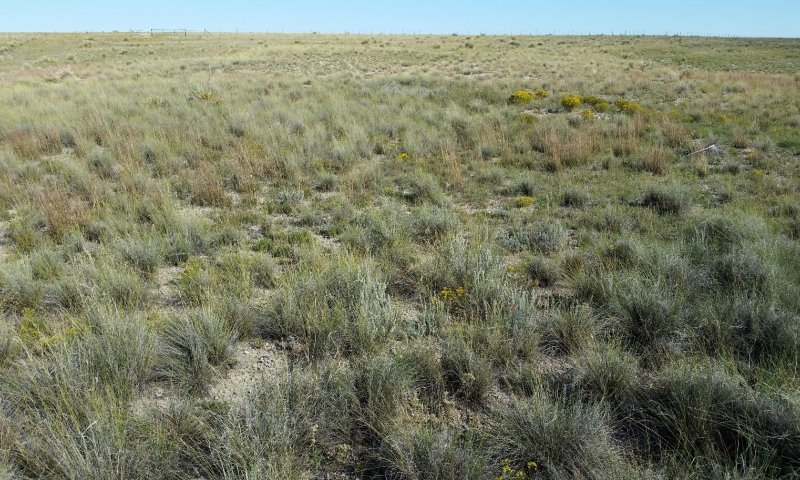
Figure 5. Community 1.1 in Colfax County, September 2018. New Mexico feathergrass is the abundant bunchgrass here. Little bluestem (reddish hue) is also quite prevalent.
This community is dominated by grasses, but contains a number of forb species, along with a considerable amount of shrubs (generally less than 10 percent cover). Foliar cover ranges from 60 to 80 percent. Total canopy cover of warm-season grasses is between 10 and 50 percent, and cool-season grass ranges between 10 and 50 percent. Forbs and shrubs can each account for up to 10 percent cover. Annual production averages around 850 pounds per acre, but can range between 600 and 1,000 pounds per acre, depending mostly on annual weather patterns.
New Mexico feathergrass is either dominant or codominant. Little bluestem represents at least 2 percent cover, and wolfstail is typically well-represented. While forbs represent a small percentage of foliar cover, their species richness is often high—leading to colorful displays following major rain events. Shrubs are always present, and are often a considerable component. Broom snakeweed, Bigelow sagebrush, and plains yucca are the most common species. Tree species (particularly oneseed juniper) are often present in trace amounts. It is not clear whether periodic fire, the vigor of grasses, or some combination of these two suppresses tree encroachment. Since considerable understory biomass is needed to produce a stand-killing fire, it stands to reason that grass vigor and fire frequency are covariate.
Community 1.2
At-risk: Grasses, shrubs and forbs
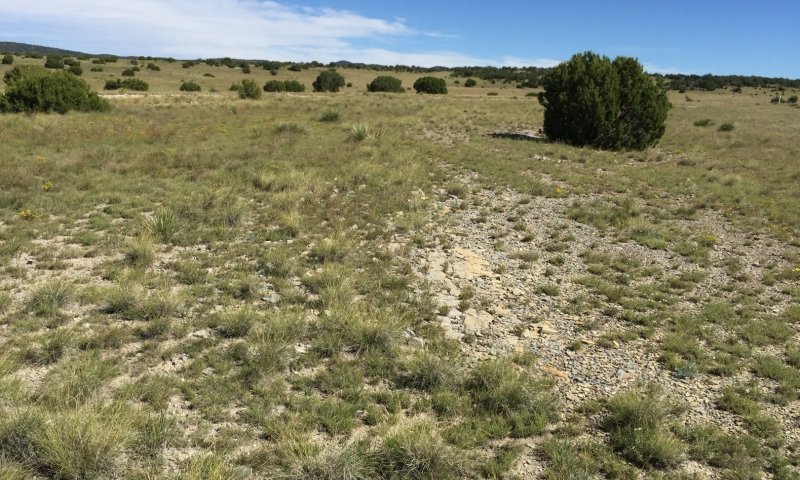
Figure 6. Community 1.2 in Colfax County, September, 2017. Note the sod-bound habit of the blue grama. While the bare ground and rock outcrop visible here can be found on any community phase, they are more obvious where grass height is diminished.
This community is dominated by grasses, but contains a number of forb species, along with a considerable amount of shrubs (generally less than 10 percent cover). Foliar cover ranges from 60 to 85 percent. Total canopy cover of warm season grasses is between 10 and 50 percent, and cool-season grass ranges between 10 and 50 percent. Forbs and shrubs can each account for up to 10 percent cover. Annual production averages around 700 pounds per acre, but can range between 550 and 900 pounds per acre, depending mostly on annual weather patterns.
New Mexico feathergrass is either dominant or codominant to blue grama. The latter is generally sod-bound. Little bluestem is present, but represents less than 2 percent cover, and wolfstail is typically well-represented. While forbs represent a small percentage of foliar cover, their species richness is often high—leading to colorful displays following major rain events. Shrubs are always present, and are often a considerable component. Broom snakeweed, Bigelow sagebrush, and plains yucca are the most common species. Tree species (particularly oneseed juniper) are often present in small amounts—typically representing less than 1 percent cover.
Pathway P1.1A
Community 1.1 to 1.2
Diverse grasses, shrubs, and forbs (diagnostic plant community)
At-risk: Grasses, shrubs and forbs
This pathway represents a period of season-long grazing, which advantages the growth and reproduction of shrubs and grazing-tolerant grasses, and suppresses herbaceous species that are more palatable and/or less resilient under grazing pressure. Under such a grazing regime, little bluestem diminishes markedly in abundance. Shrub and tree vigor increase. While the cover of blue grama may increase, it begins to assume a sod-bound habit, and its vigor diminishes.
Pathway P1.2A
Community 1.2 to 1.1
At-risk: Grasses, shrubs and forbs
Diverse grasses, shrubs, and forbs (diagnostic plant community)
This pathway represents a period of rest from season-long grazing. This advantages the growth and reproduction palatable grasses, particularly little bluestem, and allows blue grama to assume a cespitose (bunchgrass) habit. Shrub and tree vigor decrease.
State 2
Degraded State
This state occurs where a prolonged continuous grazing regime, coupled with fire suppression (intentional or incidental) have resulted in diminished diversity and vigor in the grass community. Total annual production is significantly lower than in State 1. Most or all of this difference in production results from reduced vigor of grasses. Little bluestem is absent or present in trace amounts; and early seral grasses such as purple threeawn and ring muhly are well-represented. With the exception of Community Phase 2.
Community 2.1
Shrubs and diminished grasses
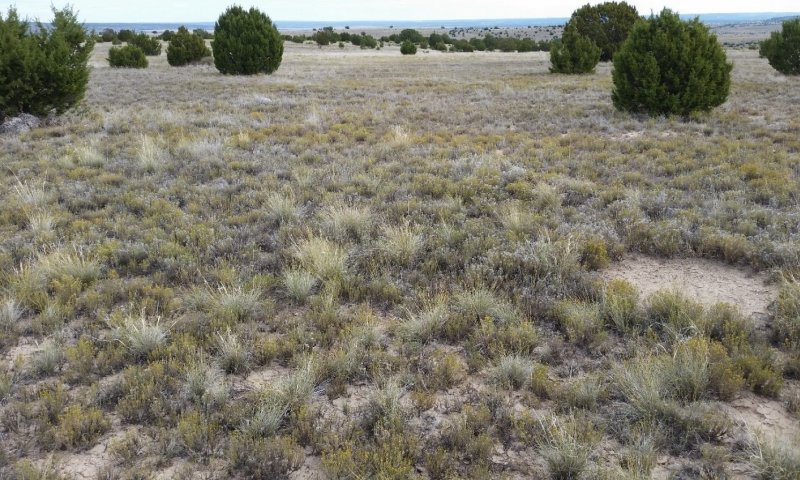
Figure 7. Community phase 2.1 in Mora County, October 2018. This is a rather extreme example of broom snakeweed encroachment.
In this community, grasses are roughly codominant to shrubs. Trees are usually present, but their cover is less than 5 percent. Total foliar cover ranges from 50 to 75 percent. Total canopy cover of warm-season grasses is between 5 and 35 percent. Cool-season grasses, particularly New Mexico feathergrass, account for less than 25 percent. Forbs account for up to 5 percent cover. Annual production averages around 600 pounds per acre, but can range between 500 and 850 pounds per acre, depending mostly on annual weather patterns.
Dominant grass species here are blue grama, sideoats grama, New Mexico feathergrass, and purple threeawn. Little bluestem is generally absent; wolfstail is often so, as well. Broom snakeweed and Bigelow sagebrush are the most common shrub species, and the former is often quite abundant.
Increased competition from shrubs appears to be suppressing forbs as well as grasses here. Blue grama is typically sod-bound in this phase.
Community 2.2
Diminished grasses, shrubs, and forbs
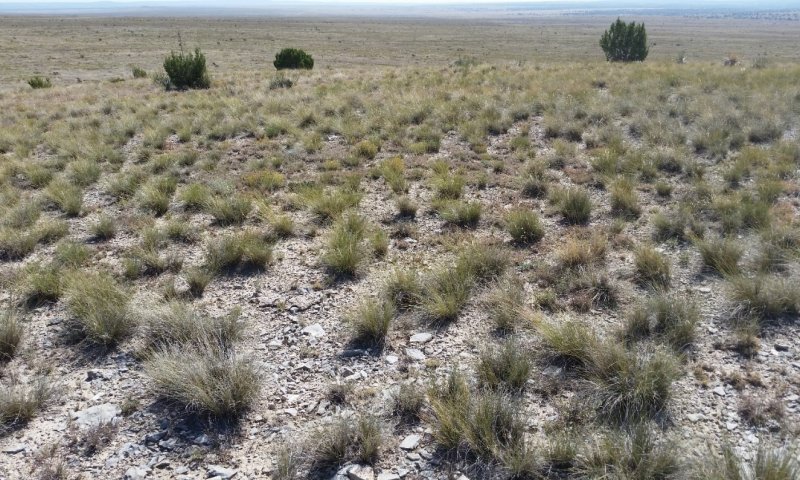
Figure 8. Community 2.2 in Mora County, 2018. Note the dominance of New Mexico feathergrass and the relative lack of woody species.
This community exists on degraded sites where woody species have been suppressed by some mechanism—fire, chemical treatments, or mechanical removal.
In this community, grasses are dominant, although their total production is usually lower than that found in State 1. Trees are often present, but their cover is less than 5 percent. Total foliar cover ranges from 50 to 75 percent. Total canopy cover of warm-season grasses is between 5 and 20 percent. Cool-season grasses, particularly New Mexico feathergrass, account for between 25 and 60 percent. Forbs account for up to 5 percent cover. Annual production averages around 600 pounds per acre, but can range between 400 and 800 pounds per acre, depending mostly on annual weather patterns.
Dominant grass species here are New Mexico feathergrass, blue grama, sideoats grama, and purple threeawn. Little bluestem is generally absent; wolfstail is often so, as well. Broom snakeweed and Bigelow sagebrush are the most common shrub species.
Community 2.3
Diminished grasses and encroaching trees
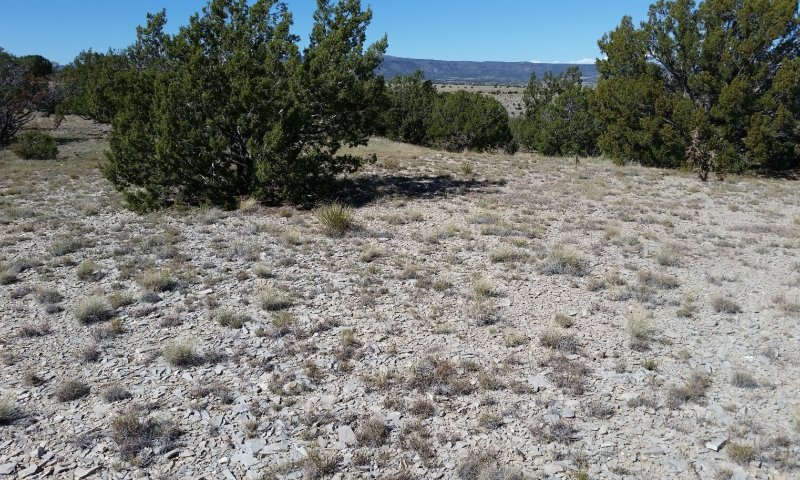
Figure 9. Community 2.3 in Mora County, October 2018.
This community occurs where trees have increased in abundance and vigor. The mechanisms for such encroachment include continuous grazing and fire suppression—the latter occurring either by direct human actions, or via reductions in understory fuel loads caused by grazing.
In this community, grasses and trees are typically codominant in terms of cover. Total foliar cover ranges from 35 to 55 percent. Total canopy cover of trees is at least 5 percent, and can exceed 25 percent. Total canopy cover of warm-season grasses is between 10 and 25 percent, and cool-season grass cover is generally below percent. Shrub cover ranges from 2 to 10 percent. Forbs typically account for less than 1 percent cover. Annual production averages around 400 pounds per acre, but can range between 300 and 600 pounds per acre, depending mostly on annual weather patterns.
Dominant trees are oneseed juniper and twoneedle pinyon, the latter being more common at higher elevations. Dominant grasses are blue grama, hairy grama, and sideoats grama. New Mexico feathergrass is sparse, if even present, in this community. Forb diversity is quite low in this community, with low spurge and perkysue being the most common species. Broom snakeweed and plains yucca are the most shrub common species.
Pathway P2.1A
Community 2.1 to 2.2
Shrubs and diminished grasses
Diminished grasses, shrubs, and forbs
This pathway represents disturbance that either kills or suppresses the growth of woody species. Fire and herbicide application are two common examples. It is also possible that a late summer drought can kill enough broom snakeweed to affect this change. In response to the suppression of shrubs, the grass community increases in vigor. New Mexico feathergrass has a particularly strong positive response here.
Pathway P2.1B
Community 2.1 to 2.3
Shrubs and diminished grasses
Diminished grasses and encroaching trees
This pathway represents the encroachment of tree species in the absence of mitigating phenomena—fire, chemical treatments, or mechanical removal. Once established, encroaching trees outcompete grasses, shrubs, and forbs in particular.
Pathway P2.2A
Community 2.2 to 2.1
Diminished grasses, shrubs, and forbs
Shrubs and diminished grasses
This pathway represents season-long grazing providing little rest and recovery for preferred grazed plants during critical growing periods, coupled with high utilization and the absence of fire. This combination of mechanisms advantages shrub species. Both herbivory and competition from shrubs suppress the growth and reproduction of grasses.
Pathway P2.2B
Community 2.2 to 2.3
Diminished grasses, shrubs, and forbs
Diminished grasses and encroaching trees
This pathway represents the encroachment of tree species in the absence of mitigating phenomena—fire, chemical treatments, or mechanical removal. Once established, encroaching trees outcompete grasses, shrubs, and forbs in particular.
Pathway P2.3A
Community 2.3 to 2.2
Diminished grasses and encroaching trees
Diminished grasses, shrubs, and forbs
This pathway represents disturbance that either kills or suppresses the growth of woody species. Fire and herbicide application are two common examples. New Mexico feathergrass has a particularly strong positive response here.
Transition T1A
State 1 to 2
This pathway represents season-long grazing providing little rest and recovery for preferred grazed plants during critical growing periods, coupled with high utilization. This typically occurs with an absence of fire. Drought is thought to push the plant community over the threshold into the degraded State 2. During this transition, little bluestem is extirpated. Other highly palatable and grazing-sensitive grass species are diminished—both in vigor and abundance. Concurrently, early seral grasses, particularly threeawn and ring muhly, increase. Shrub and tree species enjoy a competitive advantage, and increase in abundance.
Restoration pathway R2A
State 2 to 1
This process results in the recovery of the vigor and diversity of herbaceous species, as well as a significant increase in total productivity. Late seral grass species such as little bluestem and New Mexico feathergrass may require re-introduction. Since an abundance of either trees or shrubs appears to suppress herbaceous plants here, it is thought that this recovery pathway necessarily proceeds from Community Phase 2.2.



